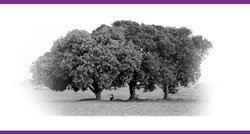RATO MONASTERY
In Tibet, Rato Dratsang was a scholastic monastery of over four hundred residents. While studies in all branches of Buddhism were pursued, leading to the Doctor of Divinity or "Geshe" degree, it was most renowned as a center for the study of logic. Students were expected to become completely familiar with the methods and rules of traditional Buddhist logical analysis. Texts were memorized and meditated on until their meaning was thoroughly absorbed. A student's grasp of the subject was tested and tempered by frequent intense debates held under highly formalized rules.
This great center for intellectual development and spiritual practice was located just outside Lhasa, Tibet, from its founding in the fourteenth century by Tak Pa Zang Bo until the destruction of its physical structure in 1959. Rato Dratsang has been reestablished in Mundgod, in the south Indian state of Karnataka, by a group of scholars and monks educated at the original monastery. The Rato Dratsang Foundation was formed to assist in the redevelopment of this great center of learning, to preserve its traditional presentation of logical analysis, and to establish a dialogue with Western centers of learning.
Rato Dratsang was host to scholars from many other monasteries during a yearly month-long "Jang" session held in the wintertime. Students came from many parts of Tibet and from the other monastic universities around Lhasa to study the original texts and commentaries, attend lectures and take part in enthusiastic dialectical discussions or deates. The teachings were thus transmitted to successive generations as a practical method for mental development.
The enlightened science of Buddhist Logic, a powerful antidote to the suffering caused by mental confusion, remains virtually unknown to modern "Western" thought. Based upon the authentic teachings of the Buddha by the Indian pandits Dignaga and Dharmakirti, the tradition was nurtured and maintained to the present day in the great monastic colleges of Tibet, particularly Rato Dratsang.
The reestablished monastery in the south of India currently houses over one hundred thirty monks and the number of monks at Rato Dratsang constantly grows. A small two-story structure was built by the few surviving Rato monks who reestablished their monastery on land supplied by neighboring Tibetan monasteries in exile. A temple is presently under construction, and more monks' rooms are needed. There are insufficient material resources to support the many monks and scholars who wish to study at the monastic college.
HIS HOLINESS APPOINTS NEW ABBOT AT RATO, APRIL 2012
Rato Dratsang was proud when His Holiness the Dalai Lama appointed one of its monks, Geshe Thupten Lhundup, to assume responsibilities as the new Abbot of Rato Monastery. This was an historic moment; this is the first time that a Westerner was appointed as abbot of an important Tibetan Buddhist monastery. On making the appointment, in Long Beach California on April 20, 2012, The Dalai Lama stated, “Your special duty (is) to bridge Tibetan tradition and Western world.”
Venerable Khen Rinpoche splits his time between The Tibet Center in New York and the re-establised Rato monastery in Karnataka, India.
The original Rato Monastery, located on the outskirts of Lhasa, Tibet, was established in the 14th Century to preserve the teachings on Buddhist logic. By 1959, Rato had grown to 500 monks, with scholars from all the great monastic universities of Tibet converging there every year for a month of intense philosophical and logical study and debate. In 1983, the monastery was reestablished in a Tibetan refugee settlement in the south Indian state of Karnataka, where two years later Geshe Lhundup la became a monk and began his monastic studies. He sat for his Geshe degree (Doctorate of Philosophy) in 1998, after which he returned to New York to assume duties as the Director of The Tibet Center —Kunkhyab Thardo Ling — where he had first begun his studies of Buddhism with the Center’s founder, the Reverend Khyongla Rato Rinpoche in 1977.
The great fifth Dalai Lama (1614-1682) said the following verse in praise of Rato Dratsang, also known as Tiger Nest Monastery:
In the heart of the dense forest of
Scriptural knowledge,
Lies the Tiger Nest sounding
The roar of the wisdom of logic.
May the study of logic to clear the minds,
Forever develop in the boundaries of the upper,
middle, and lower parts of the land of snow.
Rato Monks in front of the new temple 2012
His Holiness the 14th Dalai Lama presides over debate at Rato Monastery - 2011




